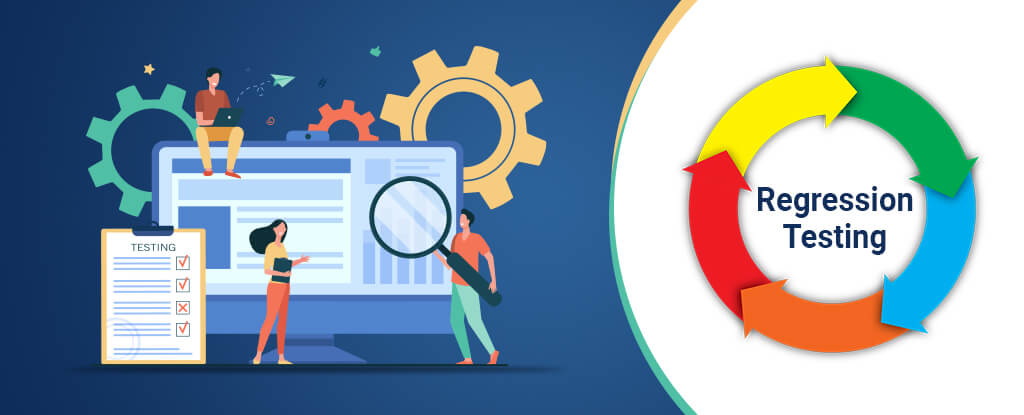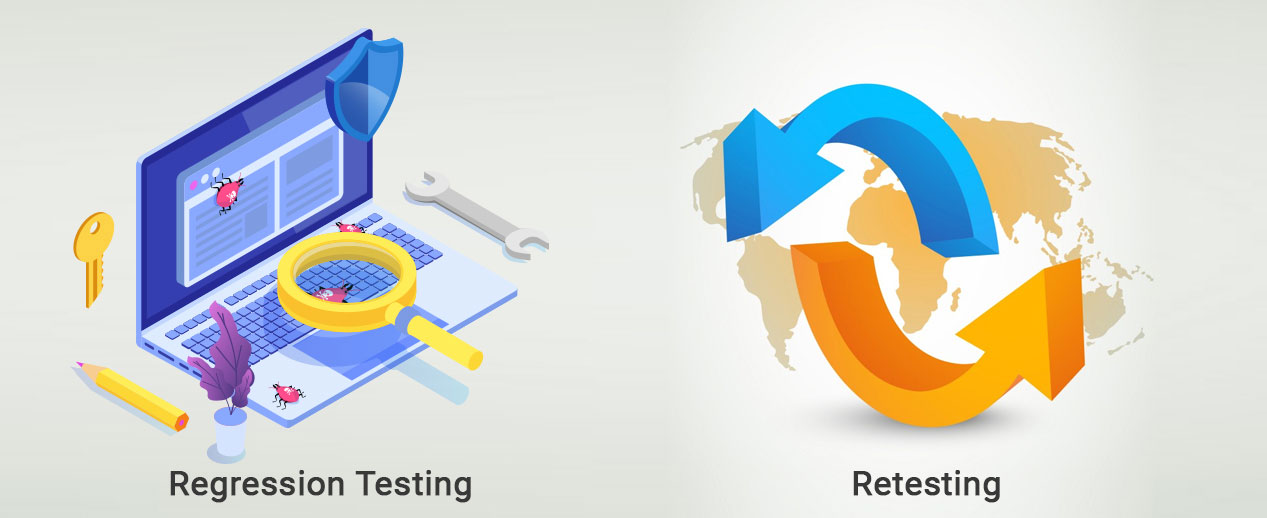
Jan 25, 2021 Category:
Software Testing

Regression testing is the most played-down part of software testing, often considered as the unnecessary source of paroxysm among the testers expressing its need at certain points of time. Especially, when the management in a company has tighter budgets as well as mind-sets, it remains nothing more than a superfluous testing activity. And there’s a specific reason to it – It carries a perception of being about re-testing the once already tested features and functionality in a software. Sounds extraneous, right? But that’s not the reality.
Imagine you are allergic to Aspirin, and have a hidden tendency to develop rashes, swelling in the face along with reddening of eyes, within a day of the tablet intake, which may take days to get sorted on their own. You are unaware of this, as you are fortunate enough to not have developed the need of it, by any chance. Had you ever be aware of it, you bet you wouldn’t have even kept it in your shelf! One day you just slithered down the snowy mountainous track while trekking and slightly dislocated your right arm ulna. The pain is unbearable and along with the whole set of medicaments, your physician prescribes Aspirin for pain relief. You are home and quite hopeful about feeling better, but develop all other symptoms the very next day. What will your condition be? It’s certainly going to be worst. The same situation may arise if the regression testing is not performed after a software is updated – One bug is fixed, the others get added.
Think about the frustration that a physiotherapy session may lead you to, by relieving your back pain and arousing the one in your neck!
In simple words, the new update may introduce a new set of issues in the software application.
But that does not suggest of getting reluctant on updating your applications. Every software needs to be updated time to time, for added features. Software updates deal with vulnerabilities. They not only fasten the security strings, but also fix bugs, and regular updates make sure you’re working on the latest version. So software updates mean software revision, and so should follow the testing revision or what it is termed as – Regression Testing.

When a software is updated, many new features and functionalities get added to it. With improved stability, the new version of software is well structured – both in terms of coding and functionality, and comes with advanced features and increased potentials, promising better user experience.
Software updates on one hand boost functionality, but on the other, may give rise to new and old faults as well. In fact, quite commonly it happens that you get the software updated, gain new functionalities, but at the same time lose old ones that you had been benefitting with since along time. You miss the previous version, same as iPhone users do, when the new version is launched but with shortfalls like touchscreen hiccups, storage issues, crashing apps, and lot more.
“You know, everybody has a cell phone, but I don’t know one person who likes their cell phone. I want to make a phone that people love.” – Steve Jobs.
In the wake of developing a dearly loved mobile phone, Apple has been working towards getting the newer versions. However, not every software company stays open for Regression Testing, and even the biggies don’t get it done right.
The ever-changing mobile technology environment has led to constant updating of applications to fix the issues found in previous versions, and that’s when the existing functionalities get altered.
The re-emergence of older issues may be caused due to poor revision practices as well, which pertain to human errors. The fixing of an issue in one aspect may unknowingly subject the software to the one in another aspect. Eventually, it may lead to same issues all over again when any feature is redesigned.
Certainly, this calls for testing of application to verify if it is still performing the way it was doing earlier. The activity may seem redundant but with automation it goes really well.
By the way, are you wondering if Regression Testing is, or anyway related to Retesting?

Source: Wistia
Often the software regression testing is confused and mistaken as software retesting. Well, both of them are carried out differently, following different objectives. Regression testing is performed to test if the new update has not disrupted the older features, and thus allows the tester to make sure that the updated software caries the older functionalities also. It also determines the new issues that may arise when any application is updated.
In different circumstances, Retesting refers to the tests carried out by testing professionals while fixing any issue or defect in the application. After they fix the issue, they run the test again to see if the issue is resolved or is still persisting.

Well, both Regression testing and Retesting are crucial for the very fact that both ensure the software is flawless, though in different aspects. But still, retesting gets higher acceptance than regression testing as it is meant for the testing the issues that are already identified, while regression testing is performed in anticipation of the potential or expected issues.

Quality matters but with speed! Owing to the ever-rising need of quality assurance and delivery but with speed, after the advent of agile applications, the organizations have automated their testing environment, shifting from manual testing practices to automated processes.
According to PractiTest, 78% of organizations, use test automation for functional or regression testing.
Regression testing can be performed manually, but with quick updates happening every now and then. The tests need to be performed at the same pace, and that too without any hiccups. Managing manual regression testing of redundant nature, is taking its toll, thereby prompting everyone to switch over to automated regression testing.
Regression testing is performed with the aid of automated testing tools, that let the testing environment to execute the regression tests automatically at specified intervals, so that the bugs and issues are reported after every update.

In any corporate organization, the process of regression testing is conducted by the software testing and quality assurance team. Their role starts when the developers’ role ends, and sometimes, even during the development process. Testing and fixing the errors or bugs detected after the development process, seem quite exorbitant to the management.
To deal with such challenges, most of them consider unit testing which involves testing specific units. It does not replace Regression testing as it is about the summed up testing of all areas of the software.
Regression testing is required every time a software code is changed or modified, to check if the other parts of the software have lost their potential, or encountered any new bug. That’s known as Functional Regression testing. Some corporates tend to skip this crucial part and end up failing to recognize the issues breeding right under their nose. Also, the failure to validate the functionalities of the software prior its release leads to erroneous software with lost functionalities, potentials, thereby leading to operational inefficiencies.
Therefore, Regression testing forms an integral part of the testing liturgy, and should be included in the testing strategy. It though may be difficult, time-consuming, and even mind-boggling at times for the small-sized QA teams, yet the benefits it brings along, make it worth attempting.
Various techniques and strategies of Regression testing that are practiced in the corporates are Corrective Regression Testing, Corrective Regression Testing, Progressive Regression Testing, Retest-All Strategy, and Selective Strategy.

Whether it a small organization, or a large enterprise, in this technology-driven world, they heavily rely upon the highly advanced technology environment, where their processes are run on high-end software.
Where there is a software, follow updates and revisions; and where there are updates, there ought to be Regression testing!
Regression testing ensures that the software is not updated at the cost of its precious old functionalities, and is absolutely bug-free. Therefore, the QA teams in organizations should plan effective regression strategies, that would save them from releasing erroneous software and process outcomes, security lapses, and lot of other vulnerabilities.
The QA team at Tarika Tech mandates regression testing before every software release, and provides Regression testing services with precision to increases the efficiency and productivity significantly. Our dexterous testers are highly skilled professionals who perform Regression testing by utilizing their experience and a vast knowledge base, along with modern testing tools and techniques.
To know about our Testing Services, click here.